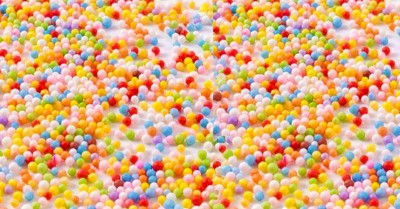Edible and safe beads, mixed with slime that a child can squeeze, pound, pinch the beads within the slime.
Materials Needed
For Tapioca
- Tapioca pearls
- Water
- Pot
- Stove
- Strainer
- Container for play
For Slime
- 1 cup cornflour
- 2 cups of craft glue
- 2 cups of water
- Few drops of food colour of choice
What to do:
For Tapioca
- Bring 5 cups of water to the boil
- Add ½ cup of tapioca pearls
- Cook tapioca pearls in a covered pot until they are floating and tender (It’s best to follow the specific instructions on your packet as brands can differ).
- Drain and cool completely
- Put beads in a shallow container with a small amount of water
- Ready
For Slime
- Take a big mixing bowl and add water to it.
- Add glue and give a thorough mix to make a uniform mixture of water and glue.
- Add a few drops of any food colour. You may add more colour to adjust the colour that you require.
- Now, add corn starch slowly to the mixture until you reach a desired consistency of slime.
Lastly, mix the tapioca pearls into slime.
Enjoy.
Hints and Tips:
- You can find tapioca pearls in many Asian supermarkets, or online.
- Once you are done playing, you can store the beads and slime in a container in the fridge for 2-3 days.
- To make the beads bright colours, try adding a couple of drops of food colouring to the cooked pearls, and let them sit for half an hour before rinsing.
- For a different sensory experience, try the tapioca pearls without mixing through the slime.
- Tapioca balls are edible, however we always recommend supervising small children.
Reference:
Tapioca water beads, Aruma
Easy Kid Friendly Slime Recipes, First Cry
